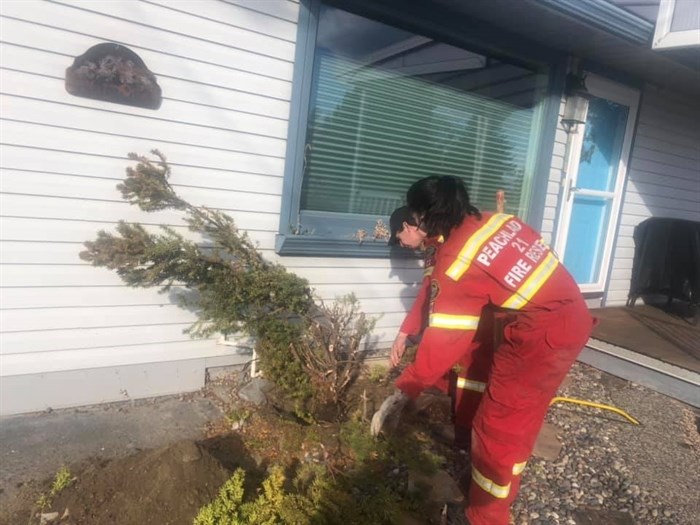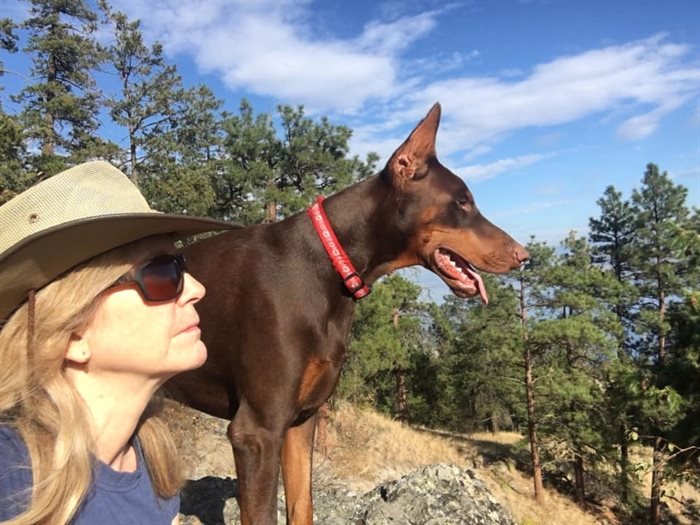More people are fire proofing their properties in the Okanagan

After an unprecedented fire season that destroyed homes and towns in the province this year, more residents are taking action toward fire proofing their properties.
Peachland resident Catherine Adams will be up to her elbows in pine needles this week while she removes flammable materials from an easement area owned by the City that borders her large property.
“The City won’t be able to go clean up around everyone’s homes,” she said. “I don’t mind doing my part to help reduce the risk for my neighbourhood. This is a significant swath of organic materials to clean up and it will take several days and truck loads.”
Adams said during wildfire season the idea to fire proof is top of mind, but once the fire activity dies down, often the interest in fire mitigation diminishes.
“Winter comes and you don’t think about it,” she said. “Then summer happens and you think about it again. Last year the house across the street burned down, though I am not sure what the cause was. We came home from holidays and our property was covered with fire retardant. We decided we needed to take action to protect our property.”
Peachland Fire Chief, Dennis Craig, said this year he is seeing more interest than ever in the FireSmart program, which is part of a Canada wide program and funded by the province.
“After this intense fire season there are more people requesting assessments,” Craig said. “We have three trained representatives that go out and do FireSmart home assessments with a top to bottom approach, and according to FireSmart guidelines.”
Craig said the fire department has been involved in the FireSmart program since 2004, but got more serious about it in 2016. This year they are offering free flammable debris removal for seniors.
“In years where there are short fire seasons the interest really drops,” he said. “This year there are so many assessment requests it is hard to keep up. We are happy we received funding recently to assist seniors.”
Craig said the biggest thing people can do is make a half-metre non-combustible zone around their houses, removing anything flammable that is touching the house.
Adams said most of the flammable debris on her property, and around it, are needles from the Ponderosa Pine tree that grows throughout the region.
“There are at least two feet of needles to clean up,” she said. “Ponderosa Pine trees shed most of their needles in November. The key is to get ahead of it. We are starting by taking the top, most flammable layer off. We are trying to stay ahead of the game.”
FireSmart Canada leads the development of resources and programs designed to empower the public and increase neighbourhood resilience to wildfire across Canada.
To contact a reporter for this story, email Shannon Ainslie or call 250-819-6089 or email the editor. You can also submit photos, videos or news tips to the newsroom and be entered to win a monthly prize draw.
We welcome your comments and opinions on our stories but play nice. We won't censor or delete comments unless they contain off-topic statements or links, unnecessary vulgarity, false facts, spam or obviously fake profiles. If you have any concerns about what you see in comments, email the editor in the link above.










